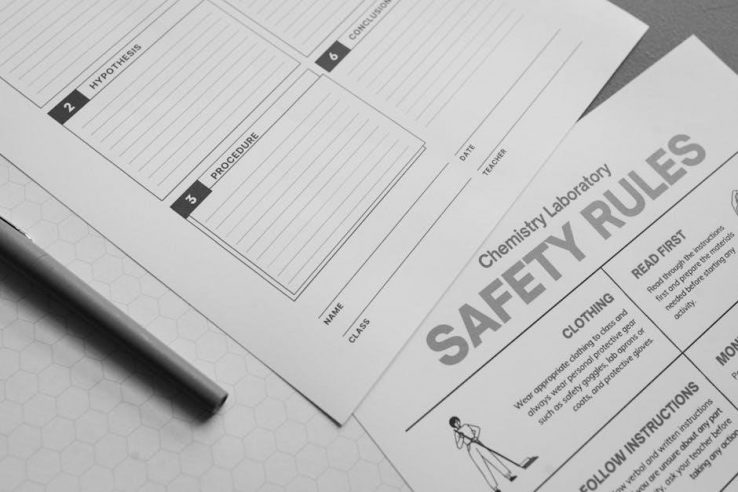ZPL (Zebra Programming Language) is a powerful language for creating and printing labels, used by Zebra printers to produce high-quality labels efficiently in various industries.
1.1 What is ZPL?
ZPL (Zebra Programming Language) is a powerful markup language used for creating and printing labels on Zebra printers. It enables precise control over label formatting, including text, images, and barcodes. ZPL commands define layout, fonts, and printer settings, ensuring high-quality output. Commonly used in industries like retail, healthcare, and logistics, ZPL is essential for efficient label production. Its versatility supports various label sizes and complexities, making it a standard in industrial printing. Additionally, ZPL facilitates easy conversion to formats like PDF for broader compatibility.
1.2 History and Development of ZPL
ZPL, developed by Zebra Technologies, was introduced in the 1980s as a language for controlling label printers. Initially designed for simplicity, it used clear commands to format text, images, and barcodes. Over time, Zebra updated ZPL to ZPL II, enhancing its capabilities with improved font support and advanced printing features. Today, ZPL remains a standard in industrial printing, widely adopted across industries for its reliability and versatility in label production, ensuring compatibility with modern systems like PDF for broader functionality.
1.3 Common Applications of ZPL
ZPL is widely used in various industries for label printing, including retail, healthcare, logistics, and manufacturing. It excels in producing shipping labels, product tags, and barcode labels efficiently. ZPL is also utilized in industrial settings for asset tracking and inventory management. Its compatibility with Zebra printers makes it a preferred choice for high-volume label production, ensuring precise formatting and quick processing. This versatility has led to its integration with tools like Labelary for converting ZPL to PDF, enhancing its utility in document sharing and archiving.

Understanding PDF Format
PDF (Portable Document Format) is a widely used file format for sharing documents, maintaining layout integrity across devices. It supports text, images, and graphics, ensuring consistent display and printing.
2.1 What is PDF?
PDF (Portable Document Format) is a file format developed by Adobe to present documents consistently across devices. It retains layout, fonts, and graphics, making it ideal for sharing and printing. PDFs are widely used for professional documents, e-books, and forms due to their universal compatibility and security features. The format supports encryption, annotations, and multi-page documents, enhancing its utility in both personal and professional settings. Its versatility has made it a standard for digital documentation worldwide.
2.2 Advantages of Using PDF
PDF offers universal compatibility, ensuring documents appear identical across all devices and operating systems. It supports encryption and password protection, enhancing security for sensitive information. PDFs maintain high-quality visuals and formatting, making them ideal for professional presentations. They are space-efficient and can include multimedia elements like images and hyperlinks. PDFs are also easily shareable and printable, preserving the original layout. These features make PDF a versatile and reliable format for both personal and professional use, ensuring consistency and security in document handling.
2.3 PDF vs. ZPL: Key Differences
PDF (Portable Document Format) is a universal file format for displaying static documents, while ZPL is a programming language for creating print-ready labels. PDFs are designed for viewing and sharing, maintaining layout and formatting across devices. ZPL, however, is used exclusively by Zebra printers to produce dynamic, variable-data labels. PDFs are not editable once created, whereas ZPL files can be modified to change label content. This makes PDF ideal for final documents and ZPL best for label production.
Why Convert ZPL to PDF?
Converting ZPL to PDF allows for easy sharing, archiving, and collaboration, as PDFs are universally accessible and preserve label designs perfectly for viewing and printing across devices.
3.1 Benefits of Converting ZPL to PDF
Converting ZPL to PDF offers numerous advantages, including universality, as PDFs are accessible on all devices without requiring specialized software. It ensures label designs are preserved accurately, maintaining formatting and layout integrity. PDFs are highly secure, reducing the risk of tampering or unauthorized edits. Additionally, PDFs are easily shareable and compatible with most systems, making collaboration seamless. This conversion also simplifies archiving and integrates smoothly with workflows, enhancing overall efficiency in label management and distribution processes.
3.2 Use Cases for ZPL to PDF Conversion
Common use cases for converting ZPL to PDF include archiving labels for record-keeping, sharing designs with non-technical stakeholders, and integrating ZPL labels into workflows that require PDF output. It’s also useful for creating multi-page PDFs, combining multiple labels or versions, and ensuring compatibility with systems that only accept PDF formats. Additionally, PDFs are ideal for attaching to emails or documents, making them easily accessible and shareable across different platforms without requiring specialized ZPL viewers.
3.3 Compatibility and Sharing
Converting ZPL to PDF ensures compatibility across devices and systems, eliminating the need for specialized ZPL viewers. PDFs are universally accepted, making them ideal for sharing labels with teams, clients, or platforms that don’t support ZPL. This format also enhances collaboration, as PDFs can be easily attached to emails, embedded in documents, or uploaded to cloud storage. Additionally, PDFs maintain label formatting and quality, ensuring consistency and professionalism in presentations or archives.

Methods to Convert ZPL to PDF
Several methods exist to convert ZPL to PDF, including online tools, desktop software, command-line utilities, and programming libraries. Each offers unique benefits for different user needs.
4.1 Online Conversion Tools
Online tools like Labelary and ZPLViewer offer quick and easy conversion of ZPL files to PDF. These web-based solutions allow users to upload their ZPL files, preview labels, and download them as PDFs. Many online converters support additional features such as label editing, resizing, and batch processing. They are ideal for users who need fast, hassle-free conversions without installing software. Some tools also provide APIs for developers to integrate ZPL-to-PDF functionality into their applications. These services are accessible from any browser, making them highly convenient for both personal and professional use.
4.2 Desktop Applications for Conversion
Desktop applications like Zebra Printer Utilities and FolderMill enable efficient ZPL-to-PDF conversion offline. These tools often provide advanced features such as batch processing, label customization, and direct integration with Zebra printers. Users can import ZPL files, adjust settings, and export high-quality PDFs. Some applications also support automated workflows, making them ideal for industrial or high-volume label production. They are user-friendly and offer robust functionality for precise control over the conversion process, ensuring accurate and professional results.
4.3 Command-Line Tools for ZPL to PDF
Command-line tools provide a flexible way to convert ZPL to PDF, ideal for automated workflows. Tools like Labelary API or custom scripts enable batch processing and integration with industrial systems. These tools often supportadvanced features such as DPI adjustment, label formatting, and margin customization. Developers can use them to create automated scripts for large-scale conversions, ensuring consistency and efficiency in label production. They are particularly useful for integrating ZPL-to-PDF conversion into existing software or printing systems.
4.4 Programming Libraries for Developers
Programming libraries like Labelary API and ZPL-to-PDF-Converter enable developers to integrate ZPL-to-PDF conversion directly into their applications. These libraries offer APIs for seamless conversion, supporting features like multi-page PDFs, custom fonts, and label formatting. They are compatible with various programming languages, including .NET and Python, making them versatile for different development environments. By leveraging these libraries, developers can automate and streamline label conversion processes, ensuring high-quality output and efficient integration with existing systems.

Step-by-Step Guide to Convert ZPL to PDF
- Select a conversion tool like Labelary or ZPLViewer.
- Upload your ZPL file to the chosen platform.
- Review and adjust settings if needed.
- Initiate the conversion process.
- Download the generated PDF file.
5.1 Using Online Converters
Using online converters is a straightforward method to convert ZPL to PDF. Access a reliable platform like Labelary or ZPLViewer. Upload your ZPL file, preview the label, and adjust settings such as DPI or page size if needed. Once satisfied, initiate the conversion process. The tool will generate a PDF version of your label, which you can download instantly. These online tools are user-friendly, requiring no installation and offering quick results for individual or small batches of labels.
5.2 Converting ZPL with Desktop Software
Desktop software like Zebra Printer Utilities or third-party tools enables ZPL to PDF conversion locally. Install the software, import your ZPL file, and adjust settings such as DPI or label size. Convert the file to PDF format, ensuring the design and layout remain intact. Desktop applications often support batch processing, making them ideal for large-scale conversions. This method provides offline functionality and is suitable for users requiring consistent, high-quality output without relying on internet-based tools.
5.3 Automated Conversion Using Scripts
Automated scripts streamline ZPL to PDF conversion, enabling batch processing and integration with existing systems. Using tools like Labelary or custom Python scripts, users can convert multiple ZPL files efficiently. Scripts allow for seamless integration with workflows, reducing manual effort. They are ideal for large-scale operations, ensuring consistency and speed. While technical expertise is required, scripts offer flexibility and customization, making them a reliable solution for automating label conversion processes in industrial or high-volume environments.

Popular Tools for ZPL to PDF Conversion
Labelary, ZPLViewer, and Zebra Printer Utilities are widely used for converting ZPL to PDF, offering features like batch processing, customization, and integration with industrial printing systems.
6.1 Labelary
Labelary is a popular online tool for converting ZPL labels to PDF format. It offers a user-friendly interface where users can paste ZPL code, preview labels, and convert them to PDF. The tool supports batch processing, customization options, and is widely used for its simplicity and efficiency in generating high-quality PDF outputs from ZPL files. It is particularly favored by developers and label designers for its reliability and ease of use.
6.2 ZPLViewer
ZPLViewer is an online tool designed to view and convert ZPL labels to PDF or PNG formats. It allows users to preview labels, edit ZPL code, and customize output settings. The tool is particularly useful for developers and designers to test and validate ZPL code before printing. ZPLViewer supports multi-page PDF generation and is known for its user-friendly interface, making it a popular choice for label creation and conversion tasks.
6.3 Zebra Printer Utilities
Zebra Printer Utilities offer a suite of tools to manage and optimize Zebra printers. These utilities include features for configuring printer settings, updating firmware, and troubleshooting. While Zebra doesn’t provide a direct ZPL to PDF converter, their utilities support label design and printing workflows, enabling seamless integration with third-party conversion tools. This ensures that labels are accurately rendered and compatible with various systems, making them indispensable for industrial and enterprise-level printing environments.
6.4 Third-Party APIs
Third-party APIs provide robust solutions for converting ZPL to PDF, offering features like label customization, batch processing, and integration with enterprise systems. These APIs enable developers to programmatically convert ZPL files into high-quality PDFs, ensuring compatibility across platforms. Popular services like Labelary and ZPLViewer offer APIs that streamline workflows, making it easy to generate, preview, and export labels in PDF format. This approach is ideal for businesses requiring scalable and automated label conversion solutions, enhancing efficiency and reducing manual effort.

Advanced Features of ZPL to PDF Conversion
Advanced features like batch processing, multi-page PDF support, and custom output settings enhance the efficiency and flexibility of ZPL to PDF conversion processes.
7.1 Customizing Output Settings
Customizing output settings allows users to tailor the conversion process to meet specific requirements. Tools like Labelary and ZPLViewer enable adjustments such as label size, resolution, and font styles. Users can define margins, orientations, and scaling factors to ensure the PDF output matches their needs. These settings enhance the visual appeal and functionality of the labels, ensuring they remain clear and professional after conversion. This level of customization is crucial for industries requiring precise formatting and high-quality label designs.
7.2 Batch Conversion Options
Batch conversion options streamline the process of converting multiple ZPL files to PDF simultaneously. Tools like 2Printer and FolderMill support bulk processing, saving time and effort. Users can select entire folders or lists of ZPL files and convert them in one go. This feature is ideal for high-volume label production, ensuring efficiency and consistency. Advanced software may also offer filtering options to organize and prioritize files, making batch conversion a seamless and scalable solution for industrial and commercial applications.
7.3 Multi-Page PDF Support
Multi-page PDF support allows users to combine multiple ZPL labels into a single PDF document, enhancing organization and efficiency. Tools like Labelary and ZPLViewer enable this feature, making it ideal for generating multi-label shipments or reports. Users can customize page settings, such as margins and orientation, to maintain consistency. This functionality is particularly useful for industrial applications, where managing large volumes of labels is common. It simplifies workflows by reducing the need to handle multiple files separately, ensuring seamless integration into existing systems and processes.

Troubleshooting Common Issues
Common issues during ZPL to PDF conversion include formatting errors, compatibility problems, and debugging ZPL code. These can often be resolved by verifying label formatting and printer settings.
8.1 Handling Formatting Errors
Formatting errors in ZPL to PDF conversion often arise from invalid commands or mismatched label dimensions. To resolve these, verify the ZPL code for syntax issues and ensure compatibility with the target PDF format; Tools like Labelary can help preview and validate labels before conversion. Additionally, checking printer settings and updating drivers can prevent errors. Always review the converted PDF to ensure accuracy and make adjustments as needed for optimal results.
8.2 Resolving Compatibility Problems
Compatibility issues may arise when converting ZPL to PDF, especially with complex label formats or outdated software. To resolve these, ensure your ZPL code adheres to standard specifications and verify that your PDF viewer supports the generated format. Tools like Labelary or ZPLViewer can help preview labels and identify mismatches. Additionally, adjusting encoding settings or using updated conversion tools can mitigate compatibility problems, ensuring seamless integration across different systems and devices.
8.3 Debugging ZPL Code
Debugging ZPL code is essential to ensure error-free conversion to PDF. Common issues include syntax errors, incorrect command sequences, or invalid parameters. Use tools like Labelary or ZPLViewer to preview and validate ZPL code. These tools highlight formatting errors, allowing quick identification and correction. Additionally, test the ZPL code snippet in a Zebra printer to confirm functionality. Addressing these issues ensures smooth conversion and accurate PDF output, maintaining label integrity and print quality across various devices and software environments.

Best Practices for ZPL to PDF Conversion
Verify ZPL code accuracy, use reliable tools like Labelary, and ensure proper settings for optimal PDF output, maintaining label quality and consistency during the conversion process.
9.1 Verifying Output Quality
Ensuring the ZPL to PDF conversion maintains high output quality is crucial. Use tools like Labelary or ZPLViewer to preview labels before conversion. Check for formatting errors, font accuracy, and image resolution. Verify that all elements, such as barcodes and text, are correctly rendered. Perform a visual inspection to ensure the PDF matches the original ZPL design. This step prevents errors and ensures professional results for labels and printing projects.
9.2 Optimizing File Size
Optimizing file size is essential for efficient storage and sharing. Use compression tools to reduce PDF size without losing quality. Adjust image resolution and convert high-quality images to lower settings. Remove unnecessary data embedded in the PDF. Utilize tools like Labelary or ZPLViewer to fine-tune settings for smaller files. Ensure fonts and graphics are optimized for web use. This ensures faster downloads and smoother sharing while maintaining professional output quality.
9.3 Ensuring Security and Privacy
Ensuring security and privacy when converting ZPL to PDF is crucial. Use encryption to protect sensitive data. Apply password protection to PDFs to restrict access. Redact confidential information before conversion. Utilize secure conversion tools with HTTPS encryption. Regularly update software to prevent vulnerabilities; Ensure compliance with data protection regulations like GDPR. Securely share files via encrypted channels to maintain confidentiality. Verify the authenticity of conversion tools to avoid data breaches.

Viewing and Editing PDF Files
Use dedicated PDF viewers like Adobe Acrobat or Foxit Reader for clear viewing. Edit PDFs with tools like PDF-XChange or online editors for annotations and modifications.
10.1 Recommended PDF Viewers
For viewing PDF files, popular choices include Adobe Acrobat Reader, known for its robust features and annotation tools. Foxit Reader is another excellent option, offering a lightweight yet feature-rich experience. Both support cross-platform use and provide clear rendering of text and graphics. Additionally, PDF-XChange Viewer and SumatraPDF are highly regarded for their speed and simplicity, making them ideal for users seeking efficient PDF viewing solutions; These tools ensure compatibility with files converted from ZPL, maintaining clarity and structure.
10.2 Editing PDFs After Conversion
After converting ZPL to PDF, editing can be done using tools like Adobe Acrobat Pro or Foxit PDF Editor. These tools allow users to modify text, images, and layouts. Online platforms like Smallpdf or PDFEscape also offer browser-based editing. For advanced needs, PDF-XChange Editor supports annotations, form filling, and Bates numbering. Ensure the editor supports the PDF version and formatting from your ZPL conversion for seamless modifications. Always save a backup to preserve the original content.
10.3 Adding Annotations and Comments
After converting ZPL to PDF, annotations and comments can be added using tools like Adobe Acrobat Pro or online platforms like Smallpdf. These tools support text highlighting, sticky notes, and drawing. Annotations are useful for collaboration, providing feedback, or marking important details. Ensure the PDF viewer supports annotation features. Tools like Foxit PDF Editor also offer advanced comment management, enabling users to track changes and finalize designs effectively. This enhances communication and ensures clarity in label designs and documentation.
ZPL to PDF Conversion in Industrial Settings
ZPL to PDF conversion streamlines industrial label workflows, enabling easy sharing and archiving. It integrates seamlessly with large-scale printing systems, ensuring consistency and efficiency in label production processes.
11.1 Integration with Printing Systems
ZPL to PDF conversion integrates seamlessly with industrial printing systems, enabling automated label production. This integration reduces manual tasks, enhances efficiency, and ensures consistent output quality. By converting ZPL files to PDF, businesses can easily share and archive labels, streamline workflows, and maintain compatibility across different printing environments. This process is particularly beneficial for large-scale operations, where high-volume label production requires precise and reliable integration with existing printing infrastructure.
11.2 Automating Label Production
Automating label production with ZPL to PDF conversion simplifies workflows, especially in industrial settings. This process allows batch conversion, enabling the creation of multiple labels quickly without manual intervention. By integrating automated conversion tools, businesses can maintain consistency, reduce errors, and improve production speed. Additionally, automated systems support multi-page PDFs, making it ideal for complex labeling requirements. This efficiency is crucial for industries requiring high-volume, precise, and timely label production, ensuring operations remain smooth and scalable.
11.3 Managing Large-Scale Conversions
Managing large-scale ZPL to PDF conversions requires efficient batch processing and automation tools. These tools enable the simultaneous conversion of multiple ZPL files, ensuring consistency and reducing manual effort. Advanced software solutions offer features like multi-threading and queue management to handle bulk conversions seamlessly. Organizations can also implement scripts or APIs to automate the process, ensuring scalability and reliability. This approach streamlines workflows, minimizes errors, and optimizes production timelines for industries with high-volume labeling needs.

Future Trends in ZPL and PDF Technology
Future trends include enhanced integration of AI for smarter label design, IoT-enabled real-time printing, and cloud-based solutions for seamless ZPL to PDF conversions, improving workflow efficiency and accessibility.
12.1 Advances in Label Printing
Advances in label printing are evolving rapidly, driven by ZPL enhancements. Integration of automation, variable data printing, and high-resolution capabilities are expected to dominate. Innovations like dynamic content generation and real-time data embedding will streamline workflows. Additionally, advancements in color printing and eco-friendly materials are anticipated. These developments aim to enhance label durability, readability, and customization, catering to growing demands in healthcare, retail, and logistics. Future updates may also include AI-driven design tools for optimized label creation and error reduction.
12.2 Enhancements in PDF Standards
PDF standards are continuously evolving, with improvements in security, accessibility, and interactivity. Enhanced encryption methods and digital signatures ensure secure document sharing. New features like embedded 3D models and multimedia support expand PDF’s versatility. Additionally, better text recognition and search capabilities improve usability. These advancements are particularly beneficial for industries requiring high-security and detailed documentation, such as legal and healthcare. Enhanced PDF standards also promote seamless integration with ZPL, fostering efficient conversions and maintaining document integrity across platforms.
12.3 Emerging Conversion Tools
New tools are emerging to enhance ZPL-to-PDF conversion, offering improved accuracy and efficiency. Advanced APIs and cloud-based solutions enable real-time conversion, reducing the need for desktop software. These tools support batch processing, multi-page PDFs, and custom formatting, making them ideal for large-scale operations. Additionally, AI-driven validators ensure error-free conversions, while integrated editors allow for post-conversion modifications. These innovations simplify workflows, catering to industries requiring high-volume label production and precise documentation, ensuring seamless integration with modern printing systems and workflows.


















































